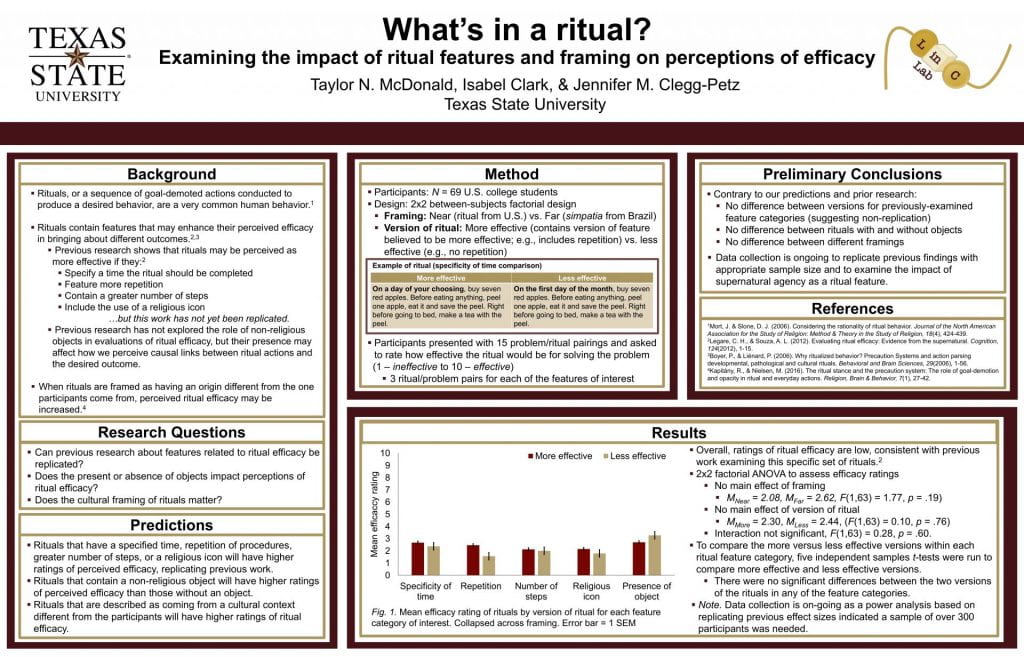What’s in a ritual? Examining the impact of ritual features and framing on perceptions of efficacy
Principle Author
Taylor McDonald
Graduate
Co-Author(s)
Isabel Clark
Abstract
Rituals, or a sequence of required goal-demoted actions conducted to produce a desired outcome (e.g., Kapitány & Nielsen, 2016; Legare & Souza, 2012), are common human behaviors that have been present throughout human history and across many cultures (Mort & Slone, 2006; Rossano, 2009). Given their ubiquity across cultures, researchers have also wondered if there are common features of rituals and whether these features are tied to perceptions of their efficacy in bringing about particular outcomes. Certain features of rituals may be linked to higher levels of perceived efficacy (Legare & Souza, 2012). The goal of the current study was to replicate and extend these findings to examine whether (1) including a nonreligious object and (2) framing the rituals as coming from a cultural context unknown to participants (far) or a cultural context familiar to participants (near), affects the perceived efficacy of rituals. We predicted that the use of nonreligious object in a ritual would increase perceptions of ritual efficacy in solving familiar day-to-day problems. We predict that when ritual are framed as coming a cultural context unknown to participants, there would be an increase in evaluations of ritual efficacy since participants may be less skeptical. In a between-subjects design, participants were asked to evaluate how effective a series of rituals were in solving different problems. In contrast with our predictions, our findings indicate that the presence of objects and framing may not impact judgments of the efficacy of rituals.

Hi Taylor — This is a really neat research idea! Congrats! Have you given any thought on how to increase the overall efficacy ratings? Is there a way to change the format of the stimuli to increase ratings? Perhaps you’ll find larger difference between conditions / larger effects with higher overall efficacy ratings.
David